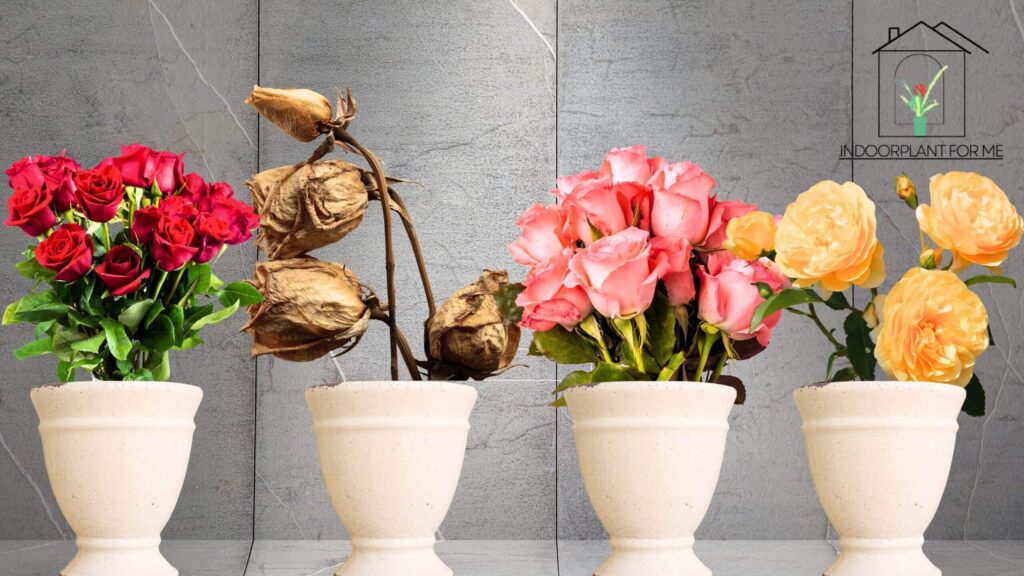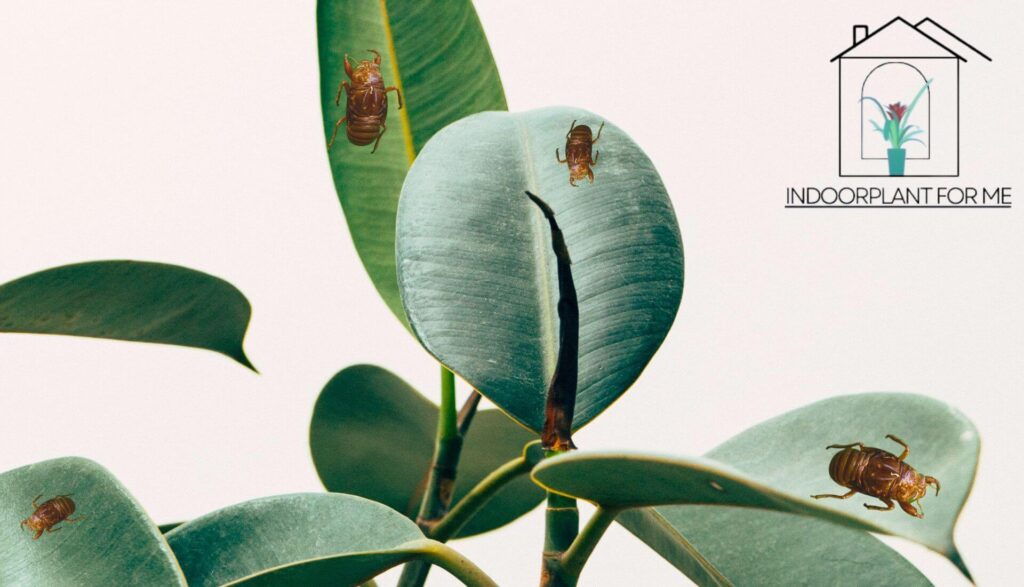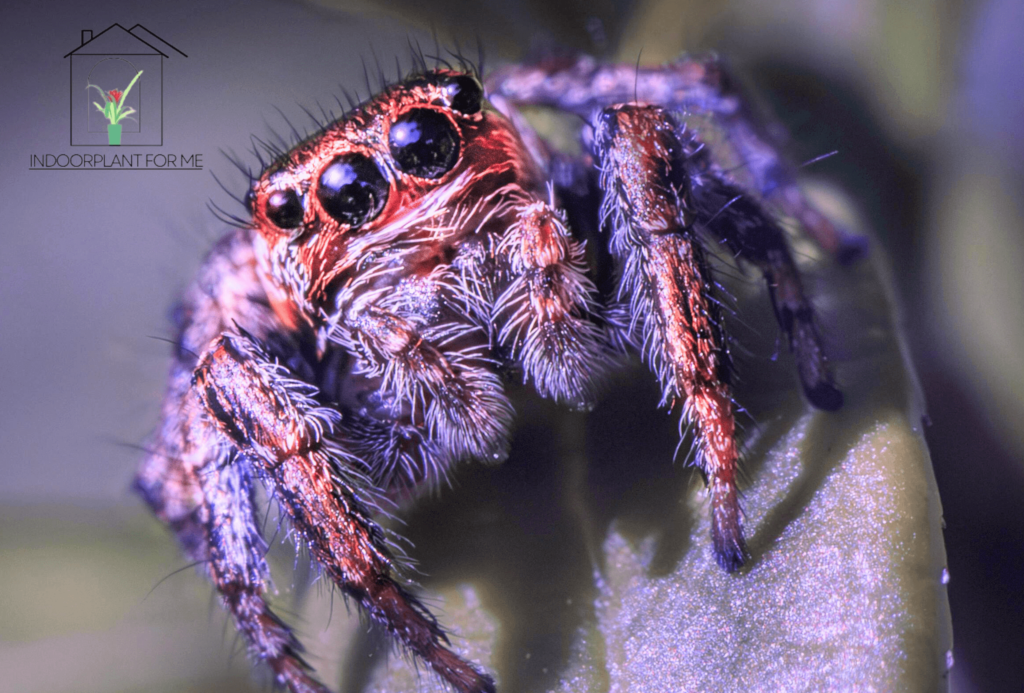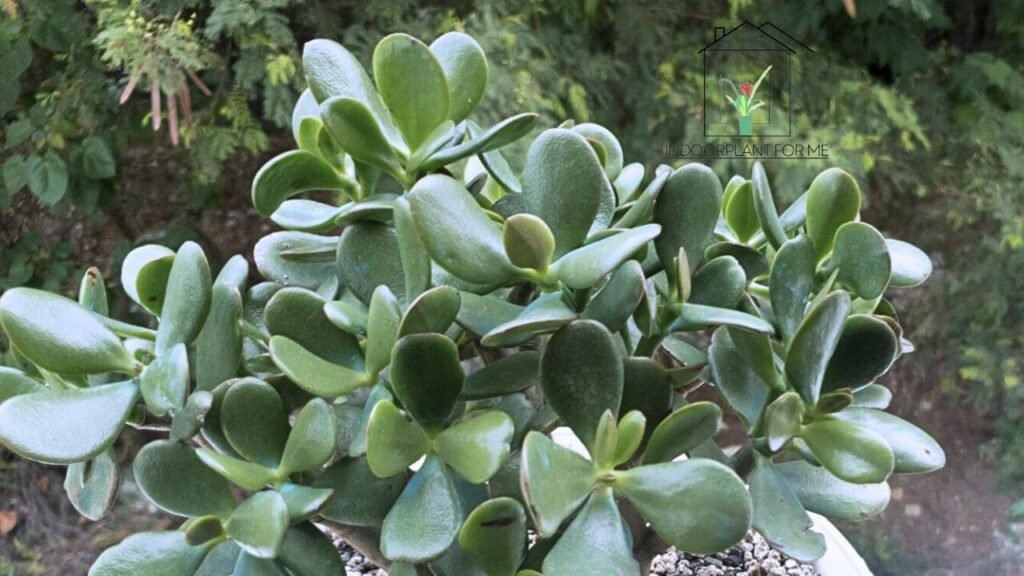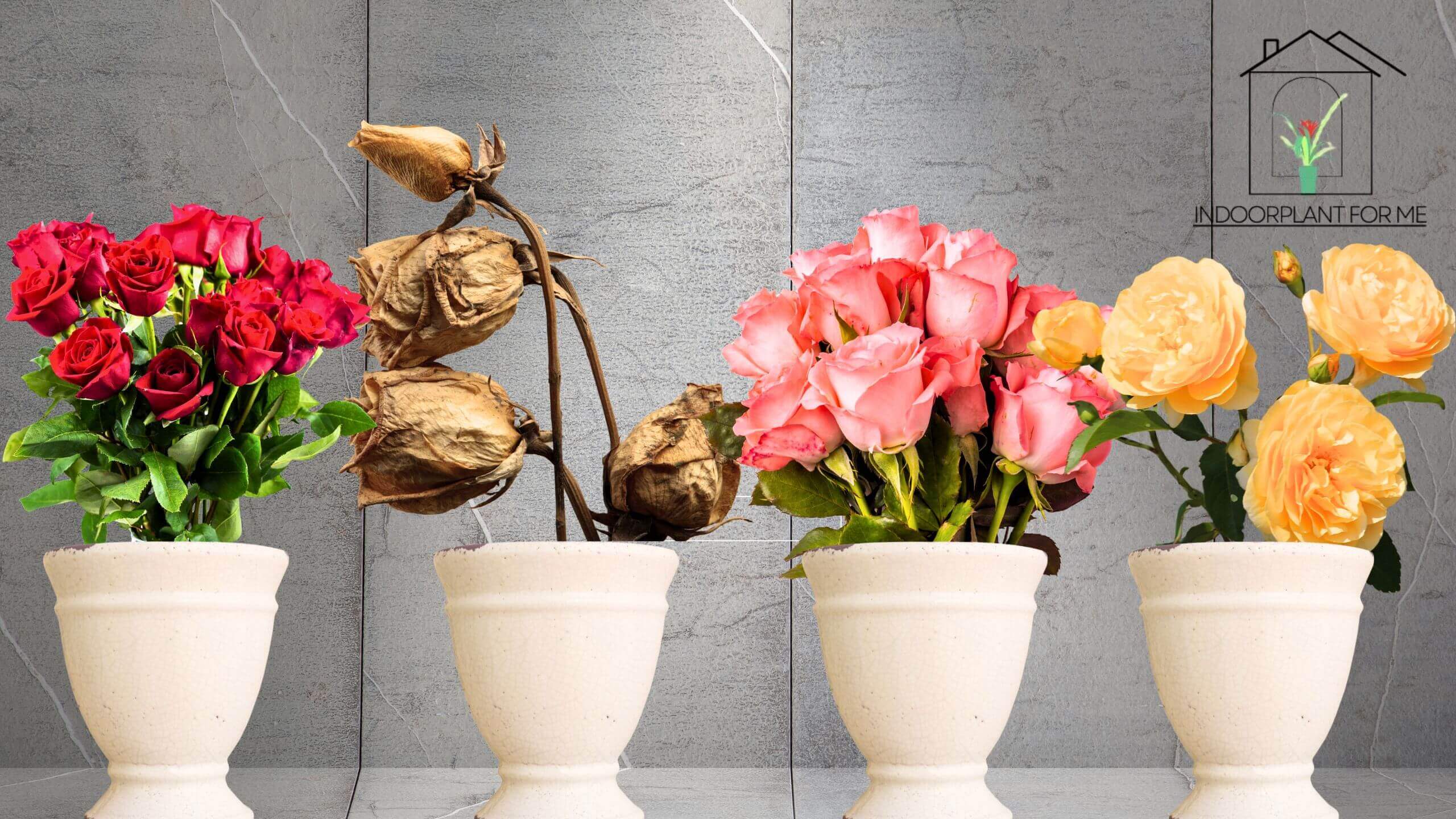Would you like to know how fast do jade plants grow? Generally, young jade plants grow faster than mature ones, and their growth slows down as they age.
Jade plants are slow growers, typically adding just a few inches to their height each year.
The jade plant (Crassula ovata) is a beloved succulent known for its thick, green leaves and low-maintenance care requirements.
Native to South Africa, these hardy plants make excellent houseplants and can live for decades with proper care.
Average Growth Rate of Jade Plants
Jade plants are slow growers, typically adding just a few inches to their height each year.
Their growth rate can vary depending on several factors, including:
– Light exposure
– Temperature
– Watering schedule
– Pot size
– Age of the plant
Generally, young jade plants grow faster than mature ones, and their growth slows down as they age.
Ideal Conditions for Jade Plant Growth
To encourage healthy growth, jade plants prefer the following conditions:
Light Requirements
Jade plants thrive in bright, direct sunlight. They can tolerate partial shade but may become leggy and lose their compact shape if light is too low.
Temperature Range
These succulents prefer warm temperatures between 65°F and 80°F (18°C to 27°C).
They can tolerate cooler temperatures in winter but should be protected from frost.
Watering Needs
Jade plants are drought-tolerant and prefer their soil to dry out somewhat between waterings.
Overwatering can lead to root rot and other issues.
Soil Preferences
A well-draining potting mix designed for cacti and succulents is ideal for jade plants. Regular potting soil can retain too much moisture.
Signs of Healthy Jade Plant Growth
A healthy, actively growing jade plant will display the following characteristics:
– New, plump leaves emerging from the stem tips
– Compact, upright growth habit
– Vibrant green coloration
– Minimal leaf drop or yellowing
If you notice any of these signs, your jade plant is likely growing at a normal, steady pace.
Encouraging Faster Growth
While jade plants are naturally slow growers, there are a few things you can do to encourage a slightly faster growth rate:
– Provide ample sunlight (at least 6 hours of direct sun per day)
– Use a balanced, water-soluble fertilizer during the growing season
– Repot every 2-3 years in a slightly larger container
– Prune leggy growth to promote a denser, more compact shape
Keep in mind that pushing jade plants to grow too quickly can compromise their health and longevity.
Repotting Jade Plants
Repotting is essential for maintaining healthy growth in jade plants. Here’s what you need to know:
When to Repot
Repot your jade plant every 2-3 years, or whenever the roots become pot-bound.
Signs that it’s time to repot include:
– Roots growing out of the drainage holes
– Plant becoming top-heavy or unstable
– Soil drying out rapidly
Repotting Procedure
1. Choose a new pot that’s 1-2 inches wider than the current one.
2. Prepare a well-draining potting mix for cacti and succulents.
3. Gently remove the plant from its current pot and loosen the root ball.
4. Place the plant in the new pot and fill in around the sides with fresh potting mix.
5. Water thoroughly after repotting.
Propagating Jade Plants
Jade plants are easy to propagate from stem or leaf cuttings, allowing you to create new plants from an established specimen. Here’s how:
Stem Cuttings
1. Use a clean, sharp knife or pruners to take a 3-4 inch stem cutting from a healthy plant.
2. Remove the lower leaves and allow the cutting to callus over for a few days.
3. Plant the cutting in well-draining potting mix, burying about half the stem.
4. Water sparingly until roots form.
Leaf Cuttings
1. Gently twist a plump, healthy leaf from the stem.
2. Allow the leaf to callus over for a few days.
3. Place the leaf on top of well-draining potting mix, weighing it down if needed.
4. Roots and a new plant will eventually emerge from the leaf’s base.
With proper care, your propagated jade plants will grow into full-sized specimens over time.
Common Problems Affecting Growth
Even with ideal care, jade plants can sometimes encounter issues that impact their growth rate.
Here are a few common problems to watch out for:
Overwatering
Too much water can lead to root rot, yellowing leaves, and stunted growth. Allow the soil to dry out between waterings.
Pests
Mealybugs, spider mites, and scale insects can infest jade plants, causing stress and slowed growth.
Treat with insecticidal soap or neem oil.
Cold Temperatures
Lack of Light
Jade plants are sensitive to cold and may experience leaf drop or cease growing if temperatures dip below 50°F (10°C).
Insufficient light can cause jade plants to become leggy and stretch toward the nearest light source, compromising their compact shape.
Addressing these issues promptly will help get your jade plant’s growth back on track.
Jade Plant Care
To keep your jade plant growing at a healthy pace, remember these key care tips:
– Bright, direct sunlight
– Well-draining soil
– Allow soil to dry between waterings
– Fertilize during growing season
– Repot every 2-3 years
– Prune to maintain shape
– Protect from cold temperatures
With patience and proper care, your jade plant will reward you with slow but steady growth for years to come.
Scientific Look at Jade Plant Growth
From a scientific perspective, the growth rate of jade plants is influenced by a combination of genetic and environmental factors. Let’s take a closer look:
Genetic Factors
As a succulent species native to arid regions of South Africa, jade plants (Crassula ovata) have evolved to grow slowly and conserve water and resources.
Their genetic makeup is programmed for survival in harsh conditions, contributing to their famously slow growth habit.
Environmental Influences
While genetics play a role, external environmental conditions also impact the growth rate of jade plants.
Factors like light exposure, temperature, water availability, and nutrient levels can either promote or inhibit growth.
Photosynthesis and Growth
Like all plants, jade plants rely on photosynthesis to produce the energy and building blocks needed for growth.
Ample sunlight is essential for this process, which is why jade plants grow faster when exposed to bright, direct light.
Temperature’s Impact
Jade plants prefer warm temperatures between 65°F and 80°F (18°C to 27°C).
Cooler temperatures can slow or halt growth, while excessively high temperatures can cause stress and inhibit growth as well.
Water and Nutrient Absorption
While jade plants are drought-tolerant, they still require a certain level of water and nutrients to sustain growth.
Too little water or nutrients can stunt growth, while overwatering can lead to root rot and other issues that impede growth.
Through a scientific lens, maintaining the right balance of water, nutrients, light, and temperature is key to promoting optimal growth in jade plants.
Maximizing Jade Plant Growth Rate
While jade plants are naturally slow growers, there are some strategies you can employ to slightly increase their growth rate without compromising their health:
Provide Ample Light
Jade plants thrive in bright, direct sunlight and will grow faster when exposed to at least 6 hours of direct sun per day.
Consider supplementing with grow lights if natural light is limited.
Use a Balanced Fertilizer
During the spring and summer growing season, feed your jade plant every 2-4 weeks with a balanced, water-soluble fertilizer diluted to half strength.
This provides the nutrients needed for healthy growth.
Increase Pot Size Gradually
Repotting your jade plant into a slightly larger pot every 2-3 years can encourage root growth and, in turn, faster overall growth.
However, avoid overpotting, as excess soil can lead to overwatering issues.
Prune for Bushier Growth
Pruning leggy growth and removing dead or damaged stems can encourage your jade plant to put its energy into producing new, compact growth.
Prune in early spring before the growing season begins.
Maintain Ideal Temperatures
Jade plants grow best when temperatures are consistently between 65°F and 80°F (18°C to 27°C).
Avoid exposing them to extreme cold or heat, which can slow or halt growth.
Remember, even with optimal care, jade plants are genetically programmed to grow slowly.
Pushing them to grow too quickly can lead to health issues and a shortened lifespan.
Jade Plant Growth Rate by Age
The growth rate of jade plants can vary significantly depending on their age and maturity.
Here’s a general breakdown:
Young Plants (1-3 years old)
– Fastest growth rate, often adding several inches in height and width per year
– Frequent new leaf and stem production
– May require repotting annually to accommodate growth
Mature Plants (4-10 years old)
– Growth slows to a few inches per year
– Less frequent new growth and leaf production
– Repotting every 2-3 years is typically sufficient
Older Plants (10+ years old)
– Very slow growth rate, often just an inch or less per year
– Minimal new leaf and stem production
– May only need repotting every 4-5 years
As jade plants age, their growth rate naturally slows down as they reach their maximum potential size.
However, with proper care, they can continue growing and thriving for decades.
Jade Plant Growth Compared to Other Succulents
While jade plants are known for their slow growth, their rate of growth is actually moderate compared to some other popular succulent species:
Faster Growers:
- Echeveria
- Sedum
- Kalanchoe
- Aeonium
Similar Growth Rate:
- Haworthia
- Gasteraloe
- Pachyveria
Slower Growers:
- Lithops
- Most cacti species
- Ariocarpus
- Copiapoa
This comparison highlights the diversity in growth habits among succulents, which have evolved to thrive in a range of arid environments.
Seasonal Growth Patterns
Like many plants, jade plants exhibit distinct seasonal growth patterns that align with their native climate in South Africa:
Spring
As temperatures warm and daylight hours increase, jade plants emerge from their winter dormancy and begin actively growing again.
New leaves and stems emerge during this period of renewed growth.
Summer
The warm summer months are the peak growing season for jade plants.
Growth is most vigorous during this time, as long as the plants receive ample sunlight and water.
Fall
Growth slows as temperatures cool and daylight hours decrease in the fall.
Jade plants begin preparing for dormancy by producing fewer new leaves and stems.
Winter
Jade plants essentially go dormant during the winter months, with little to no new growth occurring.
Their focus shifts to conserving energy and resources until spring arrives.
Understanding these seasonal growth patterns can help you provide the best care for your jade plant throughout the year.
Jade Plant Growth in Different Climates
While jade plants originate from South Africa, they can adapt to a range of climates when grown as houseplants or outdoor plants in suitable regions.
Here’s how their growth may differ:
Tropical/Subtropical Climates
In warm, humid regions like Florida or coastal California, jade plants can be grown outdoors year-round.
Their growth rate may be slightly faster due to the consistently warm temperatures and ample sunlight.
Arid/Desert Climates
Jade plants thrive in hot, dry climates similar to their native habitat.
In regions like the Southwest United States, their growth rate is typically moderate and consistent with optimal care.
Cool/Temperate Climates
When grown as houseplants in cooler regions, jade plants may experience slower growth due to decreased light levels and cooler temperatures, especially in winter.
Providing supplemental lighting can help promote growth.
Cold Climates
Jade plants cannot tolerate freezing temperatures and must be brought indoors for the winter in cold climates. Their growth will essentially halt during the winter months.
Regardless of climate, providing the right balance of light, water, and temperature is crucial for maintaining healthy jade plant growth.
Jade Plant Growth and Longevity
One of the most remarkable aspects of jade plants is their potential for longevity.
With proper care, these hardy succulents can live for decades, some even reaching 70-100 years old!
As jade plants age, their growth rate naturally slows down, but they can continue growing and producing new leaves and stems throughout their lifespan.
To promote longevity, it’s essential to:
– Avoid overwatering or underwatering
– Provide ample sunlight
– Repot every few years to refresh the soil
– Prune to maintain shape and encourage new growth
– Protect from extreme temperatures and pests
With patience and attentive care, your jade plant can become a cherished family heirloom, passed down from generation to generation.
Jade Plant Growth in Containers vs. Ground
While jade plants are commonly grown in containers as houseplants, they can also be cultivated in the ground in suitable climates.
But how does their growth differ between these two environments?
Jade Plants in Containers
– Growth rate is typically slower due to restricted root space
– May require more frequent repotting as roots become pot-bound
– Soil moisture and nutrient levels must be closely monitored
– Easier to control environmental factors like temperature and light
Jade Plants in the Ground
– Growth rate can be faster due to unrestricted root growth
– Soil moisture and nutrient levels are generally more stable
– Plants can potentially reach larger mature size
– Environmental factors like temperature and light are less controllable
Whether grown in a container or in the ground, jade plants still maintain their characteristic slow-to-moderate growth habit.
Providing ample space for root growth and meeting their basic care needs is crucial for promoting healthy growth in either environment.
Troubleshooting Slow Jade Plant Growth
If your jade plant seems to be growing slower than expected, there may be an underlying issue affecting its growth rate. Here are some potential causes and solutions:
Insufficient Light
One of the most common causes of slow growth is inadequate light exposure.
Jade plants need at least 6 hours of direct sunlight per day to thrive.
Move your plant to a brighter location or supplement with grow lights.
Overwatering or Underwatering
Both overwatering (which can lead to root rot) and underwatering can stunt jade plant growth. Allow the soil to dry out between waterings, and adjust your watering schedule as needed.
Nutrient Deficiencies
Like all plants, jade plants require a balance of essential nutrients to grow properly. Use a balanced, water-soluble fertilizer during the growing season to provide the necessary nutrients.
Temperature Extremes
Jade plants prefer temperatures between 65°F and 80°F (18°C to 27°C).
Exposure to extreme cold or heat can slow or halt growth.
Adjust the temperature or move your plant to a more suitable location.
Pests or Diseases
Infestations of pests like mealybugs or scale, or diseases like root rot or fungal issues, can severely impact jade plant growth.
Inspect your plant regularly and treat any problems promptly.
Age and Maturity
As jade plants age, their growth rate naturally slows down.
If your plant is mature or very old, slower growth may be normal and expected.
By addressing any underlying issues and providing optimal care, you can help encourage your jade plant to grow at a healthy, steady pace.
How to Treat Botrytis Blight on Roses: A Comprehensive Guide
Roses are undoubtedly one of the most beautiful and beloved flowers in any garden. With…
Should I Cut Brown Spots Off Fiddle Leaf Fig: A Complete Guide to Pruning Your Precious Plant
Yes, you can cut brown spots off a fiddle leaf fig, using the complete guide…
Can You Drown Mealybugs? Effective Strategies for Pest Control
Yes, you can drown mealybugs. It is one of the Effective Strategies for Pest Control. The…
How Fast Do Jade Plants Grow? A Comprehensive Guide
Would you like to know how fast do jade plants grow? Generally, young jade plants…
Exploring the Predatory Habits of Jumping Spiders: Do They Feast on Spider Mites?
Does the idea of exploring the predatory habits of jumping spiders interest you? Do you…
Do Jade Plants Need Sun
Asking the question; Do Jade Plants Need Sun? Yes, jade plants thrive in plenty of…
FAQs
How Big Do Jade Plants Get?
With proper care, jade plants can eventually reach 3-6 feet tall and wide, though their growth rate slows as they mature.
How Often Should I Fertilize My Jade Plant?
Fertilize every 2-4 weeks during the spring and summer growing season with a balanced, water-soluble fertilizer diluted to half strength.
Can Jade Plants Live Outside?
In USDA hardiness zones 9-11, jade plants can be grown outdoors year-round.
In cooler climates, they should be brought inside for the winter.
How Long Do Jade Plants Live?
With excellent care, jade plants can live for decades, some reaching 70-100 years old.
Why Is My Jade Plant Not Growing?
Lack of growth can be caused by inadequate light, overwatering, nutrient deficiencies, or age.
Adjust care as needed or consider repotting or pruning.
How Long Does It Take For A Jade Plant To Fully Grow?
A jade plant’s growth journey is a marathon, not a sprint.
These resilient succulents are known for their slow, steady growth, and it can take several decades for a jade plant to reach its full potential size and maturity.
While the exact timeframe can vary depending on factors like sunlight exposure, temperature, and soil conditions, most jade plants grow at a rate of just a few inches per year.
In their first few years, they may exhibit a slightly faster growth rate, but as they mature, their growth slows down considerably.
It’s not uncommon for a jade plant to take 10 to 20 years or more to reach its full height and width, which can range from 3 to 6 feet tall and wide.
Can A Jade Plant Go 2 Weeks Without Water?
Jade plants are renowned for their ability to survive dry conditions, but even these hardy succulents have their limits when it comes to drought tolerance.
While they can typically go for an extended period without water, leaving a jade plant without water for 2 weeks or longer is generally not recommended.
During periods of drought, jade plants enter a dormant state to conserve water and resources.
They can survive for several weeks or even a month or two without water, but prolonged neglect can lead to severe dehydration, leaf drop, and potentially permanent damage or death.
It’s best to water your jade plant when the soil has dried out completely, but not to the point where the plant begins to show signs of distress, such as shriveled or wrinkled leaves.
Providing a deep watering every 2 to 4 weeks during the growing season and reducing watering in winter is typically sufficient for healthy jade plant growth.
Do Jade Plants Produce Oxygen At Night?
Like most plants, jade plants engage in the process of photosynthesis during the day, absorbing carbon dioxide and releasing oxygen.
However, the question of whether they produce oxygen at night is a common one among plant enthusiasts.
The answer is yes, jade plants do produce oxygen at night, but at a much lower rate than during the day.
This is because photosynthesis, which generates oxygen as a byproduct, only occurs in the presence of sunlight.
At night, jade plants (and other plants) undergo a process called respiration, which is essentially the opposite of photosynthesis.
During respiration, plants absorb oxygen and release carbon dioxide.
However, the amount of oxygen produced during the day typically exceeds the amount consumed at night, resulting in a net production of oxygen.
While jade plants may not be the most efficient oxygen producers at night, their presence in your home or office can still contribute to a fresher, more oxygenated environment, particularly when combined with other houseplants.
Does Jade Plant Multiply?
Jade plants are known for their ability to multiply and propagate relatively easily, allowing gardeners to expand their collections or share with friends and family.
There are two primary methods by which jade plants can multiply: through stem or leaf cuttings, and by producing offshoots or “pups.”
Stem or leaf cuttings can be taken from a healthy jade plant and rooted in soil or water to grow into new plants.
This propagation method is straightforward and often successful, allowing a single jade plant to produce numerous offspring.
Additionally, mature jade plants have a tendency to produce offshoots or “pups” at their base or along their stems.
These pups can be carefully removed and potted separately, effectively creating new plants that are genetically identical to the parent plant.
Over time, a single jade plant can multiply into a small army of new plants through a combination of these propagation methods.
With proper care and patience, a gardener can watch their jade plant collection grow and expand, creating a verdant display of these beloved succulents.
Jade Plant Growth: A Journey
Growing a jade plant is a rewarding experience that teaches patience and appreciation for the natural world.
From a tiny cutting or seedling, these remarkable succulents can grow into impressive, long-lived specimens over the course of decades.
The journey begins with a young jade plant, its growth vigorous and new leaves emerging rapidly.
During this stage, it’s essential to provide ample light, water, and nutrients to support its development.
Regular repotting into slightly larger containers accommodates its expanding root system.
As the jade plant matures, its growth rate gradually slows, but its journey is far from over.
Each new leaf or stem is a testament to its resilience and adaptability.
With time and attentive care, the once-small plant transforms into a stately, sculpted masterpiece.
Throughout its life, a jade plant may experience periods of more rapid growth or temporary stagnation, reflecting the changing seasons, environmental conditions, or even major life events of its caretaker.
But through it all, this hardy succulent perseveres, a living embodiment of patience and perseverance.
For those willing to embark on the journey of cultivating a jade plant, the rewards are immense.
Beyond the simple beauty of the plant itself, there is a profound sense of connection to nature and a deeper understanding of the rhythms and cycles that govern all life.
As the jade plant grows, so too does the gardener’s appreciation for the intricate balance required to nurture and sustain a living organism.
Each milestone – a new leaf unfurling, a branch reaching toward the sun – is a celebration of life’s resilience and a reminder of the wonders that can emerge from humble beginnings.
In the end, a mature jade plant stands as a testament to the gardener’s dedication, a living heirloom to be cherished and passed down to future generations.
Its growth, slow and steady, is a metaphor for the patient cultivation of wisdom, resilience, and a deeper connection to the natural world.
In Conclusion
So embrace the journey of growing a jade plant, for in its unhurried pace lies a profound lesson in the beauty of life’s rhythms and the rewards of patient nurturing.


